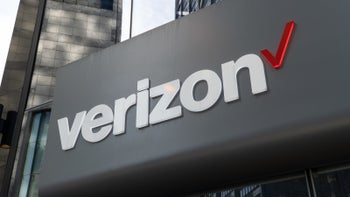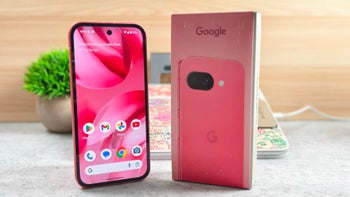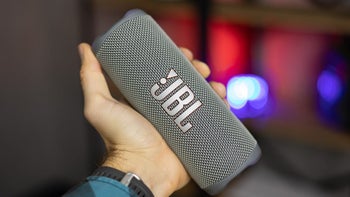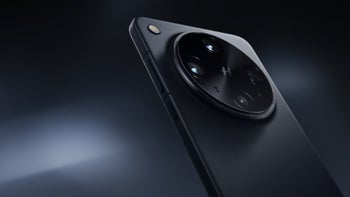Here's how major cell phone companies' logos evolved through the years
Pop quiz: what are the factors that make a brand commercially successful? Brand awareness is definitely near the top of the list – make the name of your business or product stick in people's minds and get ready for an early retirement. For this to happen, a well-designed logo helps a lot. Speaking of which, do you know what the older logos of major tech companies and cellular carriers looked like? Nobody is going to snigger if you don't – these businesses have been around for many decades, and their logos have changed quite a bit since then, as you're about to see.
The name "Samsung" can be interpreted from Korean as "Three Stars", which explains, at least in part, the design of the Samsung Byeolpyo noodles logo. It was introduced in 1938, when Samsung was still a small trading company dealing with groceries. Yes, noodles included. By 1969, Samsung had already entered the electronics industry. It wasn't a truly international company yet, but the new logo introduced that year may have been a step towards achieving that goal. The trio of stars remained a part of Samsung's logo until 1993, when the image we all know today was introduced. Its oval shape represents flexibility and simplicity while the blue color symbolizes symbolizing stability, reliability, and corporate social responsibility.
LG's history began in 1958, when the Korean chemical company Lak-Hui (or Lucky) established GoldStar. The latter became a well-known brand of consumer electronics and home appliances, including the country's first radios and TV sets, among other products. In 1997, the Lucky GoldStar corporation was renamed to LG, and thus was its logo born. Designed to resemble a smiling human face, it has been in use since then.
Nokia's roots can be traced back to a wood pulp mill set up in 1865 in Southwestern Finland. However, it was 1871 when the company name Nokia Ab became official. In the decades that followed, Nokia was involved in manufacturing rubber goods and electrical wires, as well as in the electricity generating business. It was in the early 1960's when the company began producing electronic devices, which paved the way for Nokia to establish itself as the major player on the cell phone market it once was.
The very first design for an Apple logo, which dates from April 1, 1976, showed Sir Isaac Newton reading a book under an apple tree. However, it was quickly scrapped in favor of a flat, simplistic depiction of an apple. The bite was added so that people don't confuse the apple with a cherry, and the rainbow stripe design was there to "humanize" the company.
Motorola was the name of a car radio which Galvin Manufacturing Corporation – a small company based in Chicago, Illinois – began producing in the 1930's. Eventually, the company adopted the name of its widely successful radio. Its well-known "batwing" logo was introduced in 1955, as the company went public, and has not undergone much change since then.
Sony had its first logo design registered by 1955, but it was quickly dropped in favor of a simpler one - the one we still know today. Ignoring the minor changes made to the letters' shapes, the Sony logo has remained pretty much the same since the 50's. It's a fun fact that in 1981, Sony launched an international logo design contest – basically, anyone could submit a new logo for the brand. As you can probably tell, none of the submitted designs got the thumbs-up from Sony's bosses.
Formerly known as High Tech Computer, HTC started off as a manufacturer of notebook computers. It quickly switched to making cell phones, however. These were built for other companies and sold under their respective brands.
Samsung
The name "Samsung" can be interpreted from Korean as "Three Stars", which explains, at least in part, the design of the Samsung Byeolpyo noodles logo. It was introduced in 1938, when Samsung was still a small trading company dealing with groceries. Yes, noodles included. By 1969, Samsung had already entered the electronics industry. It wasn't a truly international company yet, but the new logo introduced that year may have been a step towards achieving that goal. The trio of stars remained a part of Samsung's logo until 1993, when the image we all know today was introduced. Its oval shape represents flexibility and simplicity while the blue color symbolizes symbolizing stability, reliability, and corporate social responsibility.
LG
LG's history began in 1958, when the Korean chemical company Lak-Hui (or Lucky) established GoldStar. The latter became a well-known brand of consumer electronics and home appliances, including the country's first radios and TV sets, among other products. In 1997, the Lucky GoldStar corporation was renamed to LG, and thus was its logo born. Designed to resemble a smiling human face, it has been in use since then.
Nokia
Nokia's roots can be traced back to a wood pulp mill set up in 1865 in Southwestern Finland. However, it was 1871 when the company name Nokia Ab became official. In the decades that followed, Nokia was involved in manufacturing rubber goods and electrical wires, as well as in the electricity generating business. It was in the early 1960's when the company began producing electronic devices, which paved the way for Nokia to establish itself as the major player on the cell phone market it once was.
Apple
The very first design for an Apple logo, which dates from April 1, 1976, showed Sir Isaac Newton reading a book under an apple tree. However, it was quickly scrapped in favor of a flat, simplistic depiction of an apple. The bite was added so that people don't confuse the apple with a cherry, and the rainbow stripe design was there to "humanize" the company.
Motorola
Motorola was the name of a car radio which Galvin Manufacturing Corporation – a small company based in Chicago, Illinois – began producing in the 1930's. Eventually, the company adopted the name of its widely successful radio. Its well-known "batwing" logo was introduced in 1955, as the company went public, and has not undergone much change since then.
Sony
Sony had its first logo design registered by 1955, but it was quickly dropped in favor of a simpler one - the one we still know today. Ignoring the minor changes made to the letters' shapes, the Sony logo has remained pretty much the same since the 50's. It's a fun fact that in 1981, Sony launched an international logo design contest – basically, anyone could submit a new logo for the brand. As you can probably tell, none of the submitted designs got the thumbs-up from Sony's bosses.
HTC
Formerly known as High Tech Computer, HTC started off as a manufacturer of notebook computers. It quickly switched to making cell phones, however. These were built for other companies and sold under their respective brands.












Things that are NOT allowed: